UPES | BBA Admissions 2026
#36 in NIRF, NAAC ‘A’ Grade | 100% Placement, up to 30% meritorious scholarships
The SP Jain Aptitude Test or the SPJAT MBA exam is one of the major management entrance exams conducted by the SP Jain School of Management for granting admission to their PG programmes under the management domain. While the SPJAT exam is not very lengthy and includes questions from the other various management entrance exam syllabi, practising for the SPJAYT exams using SPJAT MBA Sample Papers is an effective preparation method. In this article, we will discuss the SPJAT MBA Sample Papers and their significance in detail on how the candidates can enhance their SP Jain Aptitude Test preparation using them.
This Story also Contains
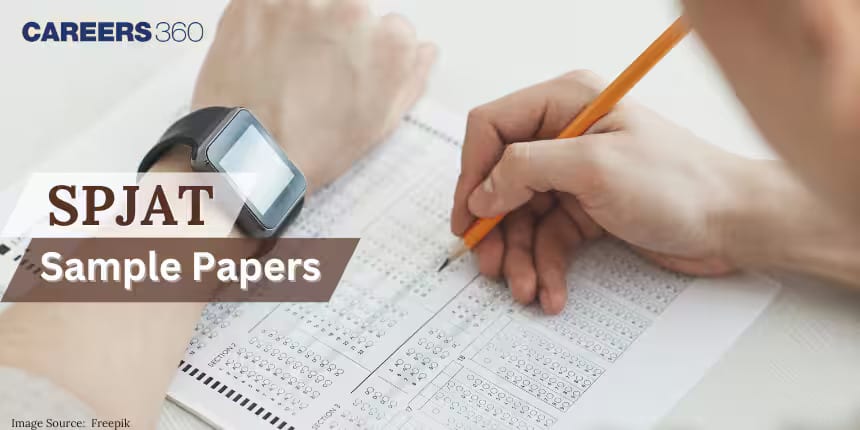
The SPJAT exam date is usually set to June or July of every month. As far as the exam structure of the SPJAT MBA exam is considered, different marks are allotted for each section. There are five sections in the SPJAT MBA exam and the marking scheme of each exam is different from the other. The exam structure and marking scheme of the SPJAT MBA exam is given below:
Name of the Sections | Number of Questions | Marks per Each Question | Total |
Diagrammatic Reasoning | 7 | 3 | 21 |
Logic | 6 | 2 | 12 |
IQ | 6 | 2 | 12 |
Numeracy | 10 | 4 | 40 |
Reading Comprehension | 5 | 3 | 15 |
Total | 34 | 100 |
While there are no sectional time limits and cutoffs, the authorities have stated that the SPJAT exam pattern may change throughout the years and hence, the candidates should keep track of the possible changes in the SPJAT exam structure by regularly checking the official website.
When it comes to the SPJAT exam preparation of the candidates, it is often seen that the candidates ignore the importance of the SPJAT Sample papers and due to this, they often face difficulties in the SPJAT exam. Let us in-depth understand the reasons why preparing for the SPJAT MBA exam using SPJAT MBA sample papers is essential.
One of the most important advantages of the SPJAT MBA sample papers is that it helps the candidates to completely understand the SPJAT MBA exam structure and help them to curate their own SPJAT MBA exam preparation strategy. The SPJAT exam structure is different from other examinations and hence slightly more care must be given to this exam by the candidates. By practising enough SPJAT sample papers, the candidates will be able to understand the exam structure completely and can efficiently use this knowledge to enhance their preparation.
One of the major benefits of solving the SPJAT sample paper is that the candidates can understand the most important topics for the SPJAT MBA exams. Shortlisting the SPJAT important topics is an essential step towards the candidate's SPJAT MBA success. This is because a candidate will be able to learn more in a short time following the key topics. After analysing the official sample papers for the SPIJAT MBA exams, the following key topics can be devised for the exam.
Section Name | Important Topics |
Diagrammatic Reasoning | Image Series, Mirror Images, Embedded Figures, Odd One Out, Figure |
Logic | Sequential Arrangements, Condition-Based Puzzles, Logical Sequences, |
IQ | Pattern Recognition, Number Series, Word Coding, Analogies, Mental |
Numeracy | Arithmetic, Probability and Combinatorics, Time and Distance, Ratio |
Reading Comprehension | Main Idea and Purpose, Tone and Style, Inferences and Conclusions, |
Both speed and accuracy and decisive parameters that matters when it comes to any management entrance exams. This skill can only be improved by the candidates if they put in sincere efforts while giving the SPJAT MBA sample papers. Only with continuous and focused efforts on the SPJAT MBA exams the candidates will be able to enhance their speed and accuracy and through this, they will be able to secure a high SPJAT MBA score.
Understanding the significance of the SPJAT sample papers is not enough, the candidates should also put efforts into finding the right sample papers and guiding their preparation on the right track. Now let us understand the various ways of finding the necessary SPJAT sample papers that can enhance the candidate’s SPJAT scores.
The SP Jain School of Management has released official SPJAT MBA sample papers on their website. It is advisable for the candidates to always download the official sample papers and practice them. The links to the official sample papers are given below for the candidate’s reference.
TITLE | DOWNLOAD LINK |
SPJAT MBA Official Sample Paper 1 | |
SPJAT MBA Official Sample Paper 2 | |
SPJAT MBA Official Sample Paper 3 |
The candidates can also seek additional materials available on the internet such as various SPJAT MBA preparation guides, SPJAT MBA sample papers and so on. They can also refer to famous management entrance examination books as well to enhance their SPJAT preparation.
Careers360 has always been a pioneer in providing high-quality study materials for various entrance examinations. We have prepared a set of resources for the SPJAT MBA examination as well. A set of 3 expertly crafted SPJAT MBA sample papers is designed by the team to enhance the candidate’s SPJAT MBA preparation through SPJAT MBA sample papers. The candidates are advised to download and study all three SPJAT sample papers and assess their preparation.
TITLE | DOWNLOAD LINK |
SPJAT MBA Sample Paper Ebook |
Some of the sample questions from the SPJAT MBA sample paper are given below:
1. Directions: Which of the following diagrams represents the relationship among the given classes Green, Mango, and Fruits?
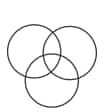
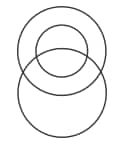

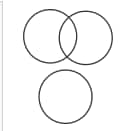
All mangoes are fruits. So, its circle will lie inside that of fruits. Also, some mangoes are green-coloured. So, they will have some areas in common.
The Venn diagram is –
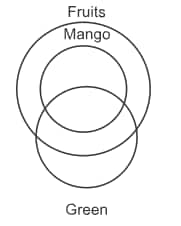
Hence, the second option is correct
2. Directions: Which of the following diagrams represents the relationship among Animal, Leopard, and Lion?

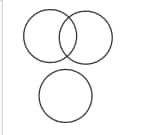


Both Leopards and Lions are animals. So, their circles will be inside that of animals.
But, Leopard and Lion are not related to each other. So, their circles will not have a common area.
The Venn diagram is as follows –
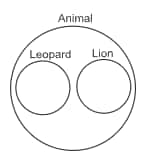
Hence, the third option is correct.
3. Directions: Find the missing figure of the series from the given responses:
Question Figures:



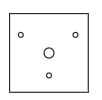

NAAC A++ Accredited| Ranked #24 in University Category by NIRF
Approved by AICTE & UGC | QS I-Gauge Gold-rated University | Scholarships available for Meritorious students | Application Deadline: 28th Feb’26
According to the given question figure –
In each alternative box symbols at the bottom and the top is removed.
From box 1 to box 2 – One small line given at the bottom centre is removed.
From box 2 to box 3 – One small circle given at the top centre of the box is removed.
So, follow the same pattern for the required missing figure –

Therefore, the figure in the second option is the required missing figure. Hence, the second option is correct.
4. Directions: The weights of 4 boxes are 90, 30, 20, and 50 kilograms. Which of the following cannot be the total weight, in kilograms, of any combination of these boxes, and in combination a box can be used only once?
190
170
100
150
Given:
The weights of 4 boxes are 90, 30, 20, and 50 kilograms.
The total weight of all possible combinations of boxes is as follows –
90 + 30 = 120; 90 + 20 = 110; 90 + 50 = 140; 30 + 20 = 50;
30 + 50 = 80; 20 + 50 = 70; 90 + 30 + 20 = 140;
90 + 30 + 50 = 170; 90 + 20 + 50 = 160; 30 + 20 + 50 = 100;
90 + 30 + 20 + 50 = 190
Therefore, there is no total weight of 150 kilograms in any combination. Hence, the fourth option is correct.
5. Directions: The weights of the four boxes are 90, 30, 40, and 60 kilograms. Which of the following cannot be the total weight, in kilograms, of any combination of these boxes, and in combination, a box can be used only once?
200
220
180
130
Given:
The weights of the four boxes are 90, 30, 40, and 60 kilograms.
The total weight of all possible combinations of boxes is as follows –
90 + 30 = 120; 90 + 40 = 130; 90 + 60 = 150; 30 + 40 = 70;
30 + 60 = 90; 40 + 60 = 100; 90 + 30 + 40 = 160;
90 + 30 + 60 = 180; 90 + 40 + 60 = 190; 30 + 40 + 60 = 130;
90 + 30 + 40 + 60 = 220
Therefore, there is no total weight of 200 kilograms in any combination. Hence, the first option is correct.
6. Directions: The weights of the 4 boxes are 90, 40, 80, and 50 kilograms. Which of the following cannot be the total weight, in kilograms, of any combination of these boxes, and in a combination a box can be used only once?
200
260
180
170
Given:
The weights of 4 boxes are 90, 40, 80, and 50 kilograms.
The total weight of all possible combinations of boxes is as follows –
90 + 40 = 130; 90 + 80 = 170; 90 + 50 = 140; 40 + 80 = 120;
40 + 50 = 90; 80 + 50 = 130; 90 + 40 + 80 = 210;
90 + 40 + 50 = 180; 90 + 80 + 50 = 220; 40 + 80 + 50 = 170;
40 + 80 + 50 + 90 = 260
Therefore, there is no total weight of 200 kilograms in any combination. Hence, the first option is correct.
7. Directions: Three of the following four letter clusters are alike in a certain way and one is different. Pick the odd one out.
UVD
PQI
JKZ
EFT
Let's check each option –
First option: UVD; U + 1 = V, Reverse of V is E → E – 1 = D
Second option: PQI; P + 1 = Q, Reverse of Q is J → J – 1 = I
Third option: JKZ; J + 1 = K, Reverse of K is P → P – 1 = O ≠ Z
Fourth option: EFT; E + 1 = F, Reverese of F is U → U – 1 = T
8. Directions: Select the odd group of numbers. (NOTE: Operations should be performed on the whole numbers, without breaking down the numbers into their constituent digits. E.g.13 – Operations on 13 such as adding /subtracting /multiplying etc. to 13 can be performed. Breaking down 13 into 1 and 3 and then performing mathematical operations on 1 and 3 is not allowed)
14 – 193
15 – 220
16 – 251
17 – 284
Let's check the options –
First option: 14 – 193 ; 142 – 3 = 193
Second option:15 – 220 ; 152 – 5 = 220
Third option: 16 – 251; 162 – 5 = 251
Fourth option:17 – 284; 172 – 5 = 284
9. Directions: Select the option that is related to the fifth number in the same way as the second number is related to the first number and the fourth number is related to the third number.
68 : 19 :: 76 : 21 :: 164 : ?
45
39
43
41
Given:
68 : 19 :: 76 : 21 :: 164 : ?
Divide the first number by 4 and then add 2 to the resultant number to obtain the second number.
Here, 68 : 19 → 68 ÷ 4 = 17 and 17 + 2 = 19
And, 76 : 21 → 76 ÷ 4 = 19 and 19 + 2 = 21
Similarly, follow the pattern for 164 –
164 ÷ 4 = 41 and 41 + 2 = 43
So, 43 is the required term in the given set of numbers. Hence, the third option is correct.
10. The average of four consecutive odd numbers is 40. What is the largest number?
42
45
43
44
Write two odd numbers before the average number 40 and two odd numbers after the average of 40.
37, 39, 40, 41, 43
The largest number is 43.
Hence, the correct answer is 43.
11. The difference between the cubes of two given natural numbers is 6272, while the positive difference between the two given numbers is 8. What is the product of the two given numbers?
160
240
200
320
. Let the numbers be x and y.
So, x3 – y3 = 6272 and (x – y) = 8
Cubing both sides of the given expression, (x – y) = 8,
(x – y)3 = 83
⇒ x3 – y3 – 3xy(x – y) = 512
⇒ 6272 – 3xy × 8 = 512
⇒ 24xy = 5760
⇒ xy = 240
Hence, the correct answer is 240.
12. The monthly income of a family is Rs. 35,000. The family spends the income on various expenses, viz., food, health, education, entertainment, and rent. After incurring all the expenses, they save 8% every month. The expenditure on health is 50% more than that of food. While food is three times the expenditure on entertainment, the expenditure on health is half of the expenditure on education. The expenditure on rent is one-third of the combined expenditure on food, health, and education. How much expenditure (in Rs.) is incurred on education?
Rs. 12,600
Rs. 8,400
Rs. 13,200
Rs. 7,700
A family income is Rs 35,000 in a month.
8% is saved every month.
So, monthly expenditure = (35000 × 92) / 100 = 32200
Let's assume they spend 100 on food.
So, their health expenditure = (100 + 50) = 150
Their entertainment expenditure = (100 / 3)
Their education expenditure = (2 × 150) = 300
So, the rent expenditure = (1/3) × (100 + 150 + 300) = 550 / 3
Total expenditure = (100 + 150 + (100 / 3) + 300 + (550 / 3)) = (2300 / 3)
So, when (2300 / 3) is total expenditure, education expenditure is 300.
Therefore, when 32,200 is total expenditure, then the expenditure on education is (300 × 3 / 2300 × 32200) = Rs. 12,600
Hence, the correct answer is Rs. 12,600.
13. Comprehension:
Read the given passage and answer the questions that follow.
Chanhudaro was a tiny settlement (less than 7 hectares) as compared to Mohenjodaro (125 hectares), almost exclusively devoted to craft production, including bead-making, shell cutting, metal-working, seal-making and weight-making. The variety of materials used to make beads is remarkable: stones like carnelian (of a beautiful red colour), jasper, crystal, quartz and steatite; metals like copper, bronze and gold; and shell, faience and terracotta or burnt clay. Some beads were made of two or more stones, cemented together, some of stone with gold caps. The shapes were numerous - disc-shaped, cylindrical, spherical, barrel-shaped, and segmented. Some were decorated by incising or painting, and some had designs etched onto them.
Techniques for making beads differed according to the material. Steatite, a very soft stone, was easily worked. Some beads were moulded out of a paste made with steatite powder. This permitted making a variety of shapes, unlike the geometrical forms made out of harder stones. How the steatite micro bead was made remains a puzzle for archaeologists studying ancient technology. Archaeologists' experiments have revealed that the red colour of carnelian was obtained by firing the yellowish raw material and beads at various stages of production. Nodules were chipped into rough shapes, and then finely flaked into the final form. Grinding, polishing and finally drilling completed the process. Specialised drills have been found at Chanhudaro, Lothal and more recently at Dholavira. Nageshwar and Balakot, both settlements are near the coast. These were specialised centres for making shell objects including bangles, ladles and inlay - which were taken to other settlements. Similarly, it is likely that finished products (such as beads) from Chanhudaro and Lothal were taken to the large urban centres such as Mohenjodaro and Harappa.
Question:
Which of these stones is very soft and easy to mould?
Quartz
Steatite
Jasper
Crystal
The second option is the correct choice.
Steatite is a stone that is very soft and easy to mould.
Explanation:
The passage mentions that steatite is a very soft stone and is easily worked. It also describes that some beads were moulded out of a paste made with steatite powder, allowing the creation of various shapes. Steatite is contrasted with harder stones in terms of workability, and its soft nature makes it suitable for producing beads in different forms.
14. Comprehension:
Read the passage and answer the questions that follow.
The first time that Agha Shahid Ali spoke to me about his approaching death was on 25 April 2001. The conversation began routinely. I had telephoned to remind him that we had been invited to a friend’s house for lunch. Although he had been under treatment for cancer for some fourteen months, Shahid was still on his feet and perfectly lucid, except for occasional lapses of memory. I heard him thumbing through his engagement book and then suddenly he said: ‘Oh dear. I can’t see a thing.’ There was a brief pause and then he added: ‘I hope this doesn’t mean that I’m dying...’ I did not know how to respond: his voice was completely at odds with the content of what he had just said, light to the point of jocularity. I mumbled something innocuous: ‘No Shahid — of course not. You’ll be fine.’ He cut me short. In a tone of voice that was at once quizzical and direct, he said: ‘When it happens I hope you’ll write something about me.’
I was shocked into silence and a long moment passed before I could bring myself to say the things that people say on such occasions. ‘Shahid you’ll be fine; you have to be strong...’From the window of my study, I could see a corner of the building in which he lived, some eight blocks away. It was just a few months since he moved there: he had been living a few miles away, in Manhattan, when he had a sudden blackout in February 2000. After tests revealed that he had a malignant brain tumour, he decided to move to Brooklyn, to be close to his youngest sister, Samantha, who teaches at the Pratt Institute—a few blocks away from the street where I live. Shahid ignored my reassurances. He began to laugh and it was then that I realised that he was dead serious. I understood that he was entrusting me with a quite specific charge: he wanted me to remember him not through the spoken recitatives of memory and friendship, but through the written word.
He knew that my instincts would have led me to search for reasons to avoid writing about his death: I would have told myself that I was not a poet; that our friendship was of recent date; that there were many others who knew him much better and would be writing from greater understanding and knowledge. All this Shahid had guessed and he had decided to shut off those routes while there was still time. ‘You must write about me.’ Finally, I said: ‘Shahid, I will: I’ll do the best I can.’
Question:
What made Shahid think his end was near?
He was unable to think clearly.
He was unable to stand on his feet.
He couldn’t utter a word.
He suddenly couldn’t see anything
The fourth option is correct.
Let's have a look at the 5th sentence from the given paragraph:
'Oh dear. I can't see a thing.' There was a brief pause and then he added: I hope this doesn't mean that I'm dying...' I did not know how to respond; his voice was completely at odds with the content of what he had just said, light to the point of jocularity."
Upon perusal of the above statement, it can be concluded that Shahid thought his end was near when suddenly he couldn't see anything.
15. Comprehension:
Read the given passage and answer the questions that follow.
Santiniketan embodies Rabindranath Tagore's vision of a place of learning that is unfettered by religious and regional barriers. Established in 1863 with the aim of helping education go beyond the confines of the classroom, Santiniketan grew into the Visva Bharati University in 1921, attracting some of the most creative minds in the country.
He developed a curriculum that was a unique blend of art, human values, and cultural interchange. Even today, in every step, in every brick, and in every tree at Santiniketan, one can still feel his presence, his passion, his dedication, and his pride in the institution.
In 1862, Maharishi Debendranath Tagore, father of Rabindranath, was taking a boat ride through Birbhum, the westernmost corner of Bengal, when he came across a landscape that struck him as the perfect place for meditation. He bought the large tract of land built a small house and planted some saplings around it. Debendranath Tagore decided to call the place Santiniketan, or the 'abode of peace', because of the serenity it brought to his soul. In 1863, he turned it into a spiritual center where people from all religions, castes, and creeds came and participated in meditation.
In the years that followed, Debendranath's son Rabindranath went on to become one of the most formidable literary forces India has ever produced. He wrote in all literary genres but he was first and foremost a poet. As one of the earliest educators to think in terms of the global village, he envisioned an education that was deeply rooted in one's immediate surroundings but connected to the cultures of the wider world.
Located in the heart of nature, the school aimed to combine education with a sense of obligation towards the larger civic community. Blending the best of Western and traditional Eastern systems of education, the curriculum revolved organically around nature with classes being held in the open air. Tagore wanted his students to feel free despite being in the formal learning environment of a school because he himself had dropped out of school when he found himself unable to think and felt claustrophobic within the four walls of a classroom. Nature walks and excursions were a part of the curriculum, special attention was paid to natural phenomena and students were encouraged to follow the life cycles of insects, birds, and plants.
The rural paradise of Santiniketan, Tagore's erstwhile home, has become a thriving center of art, education, and internationalism over the years.
Question:
Rabindranath was a 'formidable' literary force. This implies he was:
a powerful writer
an avid reader of books
an orthodox educationist
a wealthy landowner
The first option is the correct choice.
Describing Rabindranath Tagore as a formidable literary force implies that he was a powerful and highly influential writer.
Explanation:
The term "formidable" is used to convey strength, power, and the ability to inspire awe or respect. His contributions to literature were noteworthy and had a profound impact, establishing him as a dominant and powerful figure in the literary landscape.
Before concluding the article, it is important that the students are aware of the various techniques using which they can enhance their SPJAT preparation with the help of SPJAT MBA exam sample papers.
One of the best ways to make the most of SPJAT sample papers is by solving a variety of them. Each SPJAT sample paper covers different types of questions and varying levels of difficulty, giving the candidates a better understanding of the exam pattern. By working through multiple papers, the candidates can get the chance to practice answering questions that might be similar to those in the actual exam. This helps them become more familiar with the SPJAT MBA exam and prepares them to handle both easy and challenging questions with greater confidence.
Regularly assessing the candidate’s performance with SPJAT sample papers is crucial to improving their preparation. After completing each SPJAT sample paper, the candidates must take time to analyze their mistakes and identify areas where they're struggling. This self-evaluation allows the candidates to adjust their study plan and focus more on their weak areas. It also helps them track their progress over time, ensuring that the candidates stay on the right path as they prepare for the SPJAT exam.
OTHER USEFUL RESOURCES
For effective preparation for the SPJAT MBA exam, candidates can download and study a variety of management entrance exam preparation books provided by Careers360.
eBook Title | Download Links |
3000+ Most Important Words - Vocabulary Builder | |
500+ Most Important Idioms and Phrases | |
300+ Most Important Phrasal Verbs | |
Permutation & Combination - Video Lectures and Practice Questions | |
Mastering DILR Questions with Expert Solutions |
Frequently Asked Questions (FAQs)
Yes, one can give the SPJAT exam from home as it is an online exam. Candidates must note that the test is a computer-based test and does not follow the traditional pen and paper method and no admit cards will be issued for the same.
SP Jain's degree validity depends on the location of the campus and its specific accreditations.
The SPJAT is considered moderately difficult. It presents a challenge by testing analytical and verbal skills, but with proper preparation and practice, many candidates find it manageable. Focused study and familiarizing yourself with the exam format can greatly increase your confidence.
SP Jain accepts multiple exams for its MBA program, including the SPJAT, GMAT, and CAT. Candidates can select the exam that aligns best with their strengths. Each test evaluates different skills that are essential for success in the MBA program.
Yes, one can give the SPJAT exam from home as it is an online exam. Candidates must note that the test is a computer-based test and does not follow the traditional pen and paper method and no admit cards will be issued for the same.
SP Jain's degree validity depends on the location of the campus and its specific accreditations.
The SPJAT is an entrance exam for the MBA program at SP Jain School of Global Management. It measures skills like analytical reasoning, problem-solving, and verbal ability. The test is designed to assess whether candidates are prepared for the demanding MBA curriculum and plays a key role in the admission process.
On Question asked by student community
Hello,
No, because as per the eligibility of the college you need to have a graduation degree from a recognized university. If you are in the final year of your graduation and the result is awaited, you can still apply. They also consider full-time work experience of 0-3 years. As you are passing your class 12th you cannot get admission in SPJAT College.
Hope this helps you,
Thank you
https://bschool.careers360.com/exams/spjat/amp
Hi,
SPJAT is a special admission entrance exam conducted by S P Jain Global School of Management for admission into its management programs. Hence its scores are not valid anywhere outside the institute. SPIJMR accepts only CAT and GMAT scores.
Hope it helps.
Hi Aspirant,
The various types of questions that come in SPJAT exam are Diagrammatic Reasoning, Logic, IQ, Numeracy, Reading Comprehension.The question consists of four sections with multiple choice questions.The duration is of 1 hours in online mode.
Hope it helps!!
hi,
spjat exams the entrance test for mba admission in sp jain global school of management. the application process and exam happens in 3 rounds. the round 3 deadline of application was october 24, 2019. round 3 admission process is going on. as you dont appear in exam you can not get admission. you need to wait for next year. you can register and appear for test when it will come.
Among top 100 Universities Globally in the Times Higher Education (THE) Interdisciplinary Science Rankings 2026
Partnerships with diverse assortment of global organizations and industry leaders | Industry-driven curriculum
B.Sc (Hons) Admissions 2026 Now Open | Ranked Among the Top 100 Universities in the World by QS World University Rankings 2025
BBA | BBA (Hons.) | BBA+ MBA (Integrated) | AACSB, Business Graduates Association, AMDISA Member | Merit-Based Scholarships | Application Deadline: 20th Jan'26
#36 in NIRF, NAAC ‘A’ Grade | 100% Placement, up to 30% meritorious scholarships
Recognized as Category-1 Deemed to be University by UGC | 41,000 + Alumni Imprints Globally | Students from over 20+ countries